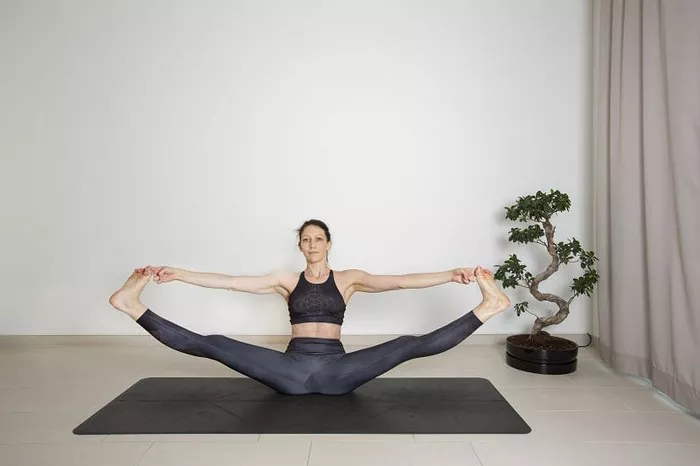Yoga has long been recognized for its multitude of health benefits, including improved flexibility, reduced stress, and better mental clarity. Among the many different styles of yoga, Iyengar yoga stands out for its precision, use of props, and therapeutic approach. However, one question often arises among yoga practitioners and fitness enthusiasts alike: Does Iyengar yoga help in weight loss?
To address this question, we must first understand what Iyengar yoga is, how it functions, and the mechanisms through which it can contribute to weight management and overall health. In this comprehensive article, we will delve into the principles of Iyengar yoga, explore its physical and psychological effects, and examine whether it can be considered a viable tool for weight loss.
What Is Iyengar Yoga
Iyengar yoga was developed by B.K.S. Iyengar, a prominent Indian yoga teacher, and is characterized by meticulous attention to alignment, the use of props such as blocks, belts, and bolsters, and a focus on holding poses (asanas) for extended periods. Unlike more vigorous forms of yoga like Ashtanga or Power Yoga, Iyengar yoga emphasizes precision and depth over speed and repetition.
The practice is accessible to people of all ages and abilities because of its adaptable nature. Props help individuals with limited flexibility or mobility achieve the correct alignment and experience the full benefits of each posture. This therapeutic orientation makes Iyengar yoga particularly suitable for those recovering from injury or dealing with chronic conditions.
The Relationship Between Yoga and Weight Loss
Before examining Iyengar yoga specifically, it is important to understand how yoga in general can contribute to weight loss. Weight loss occurs when there is a consistent calorie deficit, meaning the number of calories burned exceeds the number consumed. Yoga contributes to weight loss in several ways:
Caloric Burn: Some yoga styles, especially dynamic ones like Vinyasa or Bikram, increase heart rate and promote sweating, contributing directly to calorie expenditure.
Muscle Engagement: Yoga builds lean muscle mass, which increases resting metabolic rate, allowing the body to burn more calories at rest.
Stress Reduction: Chronic stress is linked to weight gain due to elevated cortisol levels. Yoga reduces stress, which can positively affect hormone balance and appetite regulation.
Mindfulness and Eating Habits: Regular yoga practice enhances mindfulness, leading to more conscious eating habits and better dietary choices.
Improved Sleep: Better sleep regulation supports healthy metabolism and can reduce late-night snacking.
With these general mechanisms in mind, we can now evaluate how Iyengar yoga specifically fits into the weight loss paradigm.
Iyengar Yoga and Physical Activity
Though not as vigorous as some other yoga styles, Iyengar yoga still provides a significant physical workout. The emphasis on holding poses for longer periods engages both major and minor muscle groups. A typical Iyengar class may include standing poses, forward bends, twists, backbends, and inversions—all designed to build strength, endurance, and flexibility.
Holding poses longer increases muscular tension and promotes endurance. While the calorie burn may not be as high as with aerobic exercises, the muscle engagement in Iyengar yoga is profound. For example:
Standing Poses: Poses like Trikonasana (Triangle Pose) and Virabhadrasana (Warrior Pose) build strength in the legs, core, and back.
Inversions and Arm Balances: These poses demand strength and control, activating the upper body and core muscles.
Backbends and Twists: These improve spinal flexibility and stimulate abdominal organs, potentially aiding digestion and metabolism.
Over time, consistent practice can lead to increased lean muscle mass and improved posture, both of which contribute to better body composition.
The Role of Props in Iyengar Yoga
Props are a defining feature of Iyengar yoga. While some may assume that using props makes the practice less intense, the reality is that props allow practitioners to access deeper levels of the pose. This ensures that the right muscles are engaged without risking injury or strain.
For example, using a block in Trikonasana helps maintain alignment, enabling the practitioner to stay in the pose longer and with greater muscular activation. Over time, this builds stamina and strength.
Props also make the practice more inclusive. Overweight or obese individuals, who might find fast-paced classes daunting, can benefit from Iyengar yoga’s supportive approach. This inclusivity encourages consistency, which is crucial for any weight loss journey.
Psychological Benefits and Mindfulness
One of the most powerful, yet often overlooked, aspects of Iyengar yoga is its impact on the mind. The precision and concentration required in each pose cultivate deep mindfulness. This mental discipline translates beyond the yoga mat, encouraging healthier lifestyle choices.
Mindful eating is a key factor in sustainable weight loss. Iyengar yoga trains the mind to slow down, observe, and act with intention. Practitioners often report reduced emotional eating and increased awareness of satiety cues after incorporating mindfulness techniques into their daily lives.
Additionally, Iyengar yoga is known to reduce anxiety and depression—conditions often linked with weight gain. The meditative aspect of holding and breathing into each pose can lower cortisol levels, improving emotional balance and reducing the likelihood of stress-induced eating.
Realistic Expectations and Long-Term Benefits
While Iyengar yoga may not result in rapid weight loss, it fosters a holistic transformation that includes improved strength, flexibility, posture, and mental clarity. The weight loss associated with Iyengar yoga is often gradual and sustainable, rooted in lifestyle changes rather than temporary efforts.
A person practicing Iyengar yoga regularly may notice the following:
- Improved muscle tone and body awareness
- Decreased bloating and improved digestion
- Better sleep and lower stress levels
- Healthier eating patterns
- Enhanced motivation for other forms of physical activity
Integrating Iyengar Yoga Into a Weight Loss Plan
To optimize weight loss through Iyengar yoga, consider the following tips:
Practice Regularly: Aim for at least 3–5 sessions per week, gradually increasing duration and complexity.
Combine With Cardio: Supplement Iyengar yoga with aerobic activities like walking, cycling, or swimming to boost caloric burn.
Adopt a Balanced Diet: Support your practice with nutritious, whole foods and mindful eating.
Track Progress Holistically: Focus not just on the scale but also on how you feel, how your clothes fit, and improvements in strength and flexibility.
Work With a Certified Teacher: Especially for beginners, guidance from a certified Iyengar instructor ensures correct alignment and safe progression.
Conclusion
Iyengar yoga is not a high-intensity workout, but it offers a deep and effective approach to wellness that can support weight loss in a sustainable and meaningful way. Its focus on alignment, strength-building, and mindfulness makes it a valuable addition to a comprehensive health and fitness routine.
While it may not replace cardio for those seeking rapid weight loss, it enhances physical conditioning, reduces stress, and promotes healthier habits—all of which are critical components of a successful weight management strategy. Ultimately, the beauty of Iyengar yoga lies in its ability to meet practitioners where they are and guide them toward long-term health and vitality.
Related Topics:























